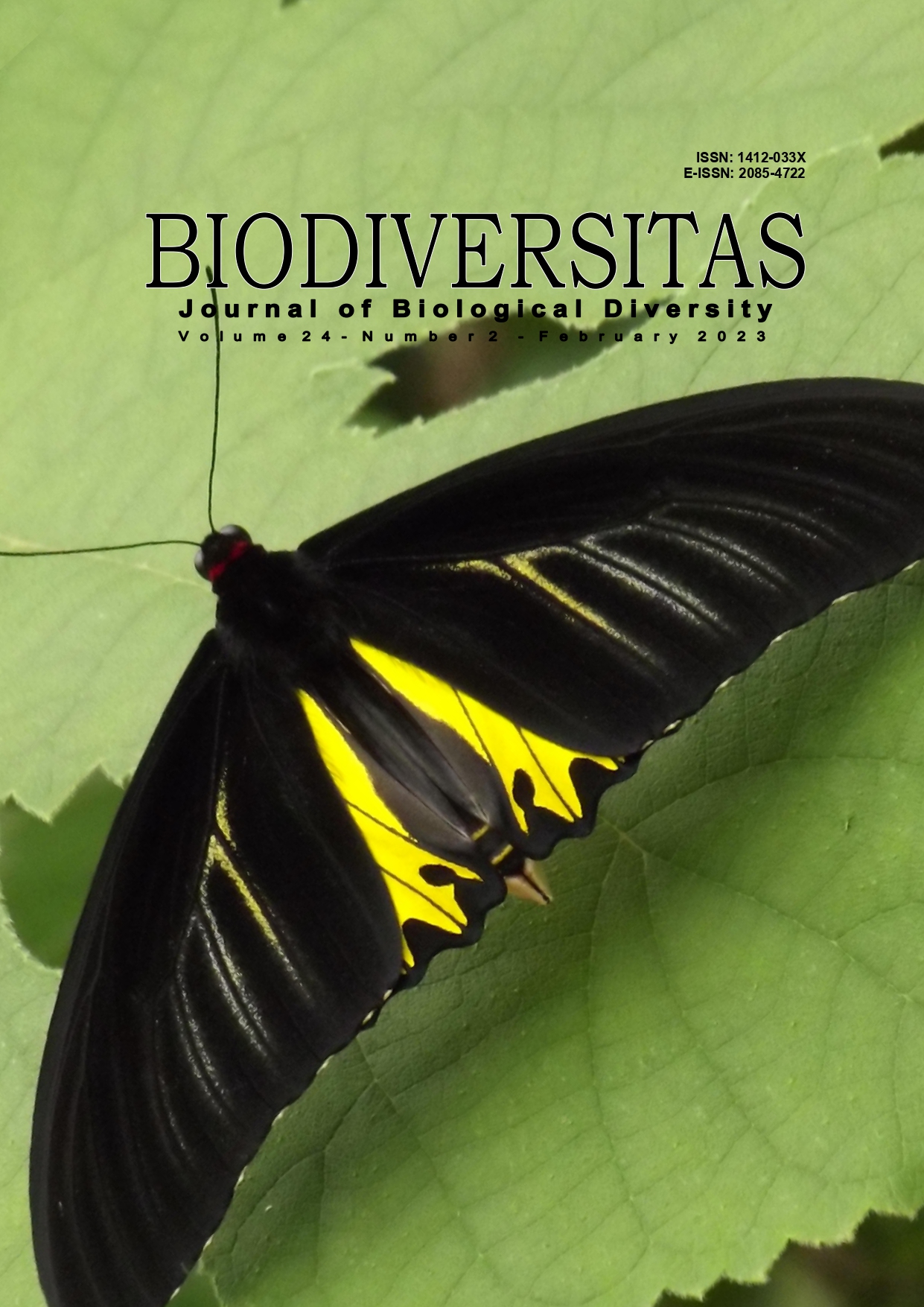Determination of Begomovirus on chili plants (Capsicum sp.) in Buton and Muna Islands, Southeast Sulawesi, Indonesia
##plugins.themes.bootstrap3.article.main##
Abstract
Abstract. Widodo CJ, Taufik M, Khaeruni A, Mallaranggeng R. 2023. Determination of Begomovirus on chili plants (Capsicum sp.) in Buton and Muna Islands, Southeast Sulawesi, Indonesia. Biodiversitas 24: 741-751. Begomovirus disease is one of the main factors inhibiting chili cultivation which could harm plants and result in crop failure. This study aimed to determine the symptoms of begomovirus disease in chili plants in Buton and Muna, Southeast Sulawesi. The methods used are disease incidence survey, insect vector observation, molecular identification using the polymerase chain reaction (PCR) technique, and Sanger sequencing (Applied Biosystem 3500). The survey was conducted in Southeast Sulawesi province, covering Bau-Bau City, Buton Regency, Central Buton, North Buton, Muna, and West Muna. The results showed that the incidence and severity of Begomovirus disease were observed highest in Buton islands, 73% and 49.5% (Buton City), followed by North Buton, Central Buton, and Buton, with the incidence and severity of Begomovirus, respectively, of 71.74% and 59.5%; 69.32% and 51.5%; and 68% and 61.5%. While in Muna Regency, 63.16% and 38.5%, West Muna, 73.79% and 53.50%. On the other hand, the highest percentage of the whitefly population was in Bau-Bau City, 24%, while the lowest was in West Muna, 15.5% supporting this observation. Furthermore, PCR analysis successfully amplified symptomatic isolates from Buton and Muna islands at a band length of 580 bp. On the other hand, Sanger sequencing analysis revealed the existence of the Indonesian Pepper Yellow Leaf Curl Virus (PepYLCIV) with more than 96% genetic homology to the Gene Bank data of MN094866 PepYLCIV Capsicum annuum Indonesia and MN738463 PepYLCIV Chili pepper Indonesian. This information is the first report of the presence of Begomovirus on the two islands.

